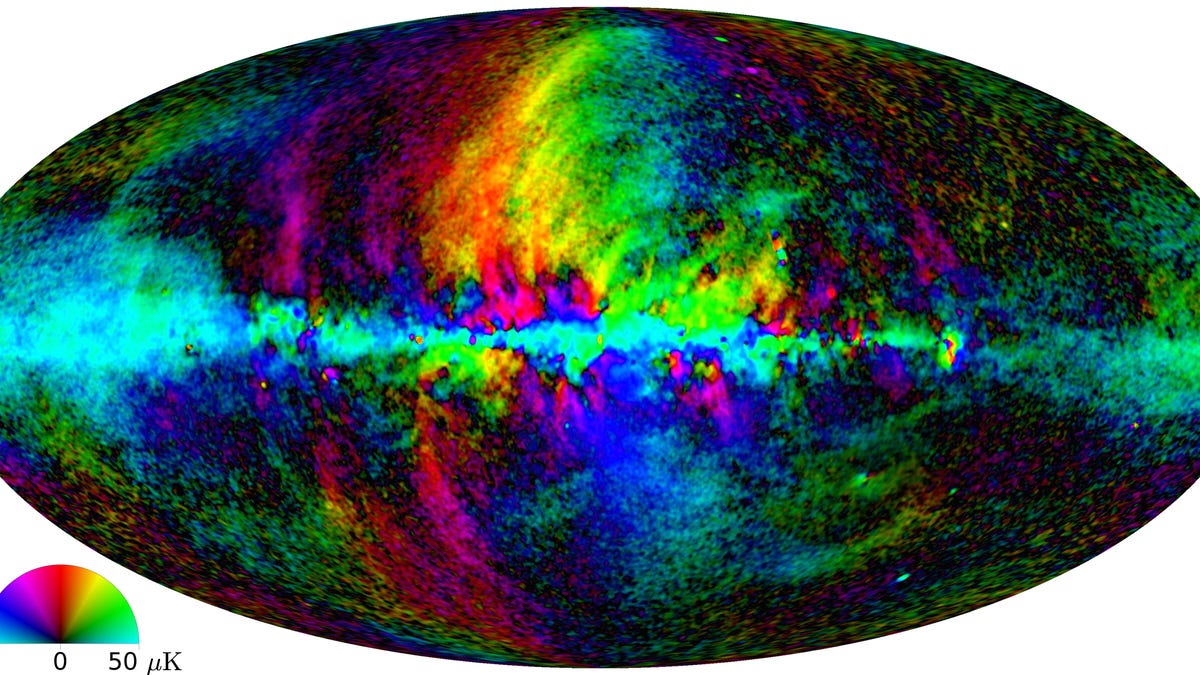A mysterious cosmic bubble captured in rainbow microwave
This image captured by the Planck space observatory is the best image to date of the mysterious Loop I structure.
There's a lot of weird stuff in space. And a lot of that weird stuff is invisible, so we need to go poking around with things like radio telescopes and interferometers to try and figure out what's out there. One of these tools is the European Space Agency's Planck space observatory, which maps the universe's cosmic microwave background.
It's thanks to the Planck's instrumentation that we have this new image. It looks like something you might see on a tie-dyed t-shirt, but it's the best image ever taken of a nearly circular structure in space known as Loop I.
Loop I covers about a third of the sky, mostly appearing in the northern hemisphere. If we could see it, it would be wider than 200 full moons when viewed from Earth.
Based on X-ray data, it's full of hot gas, but its actual size is really difficult to gauge, since astronomers don't know how far away it is. It might be relatively close to Earth, around 400 light-years away. If it's in this location, it could be what is known as a superbubble, a giant bubble in space carved out by the combined explosions of O and B stars.
However, Loop I could be much farther away, around 25,000 light-years. From our vantage point on Earth, it's situated in the direction of the centre of the Milky Way galaxy. Depending on how far away it actually is, it could be the result of activity from the black hole at the galactic centre.
The greater consensus seems to be that Loop I is a superbubble. Using information such as the Planck observatory can provide, astronomers can examine the structure in greater detail to try and figure out exactly what, and where, it is.


